Moto Guzzi V100 Mandello S Review
By Rennie Scaysbrook
There are times when I’m very glad I love motorcycles, because they take me to places I could only dream of.
Mandello Del Lario, situated about an hour and half north of Milan and on the same body of water as the famed Lake Como, is one of those impossibly beautiful places you read about only in travel magazines.
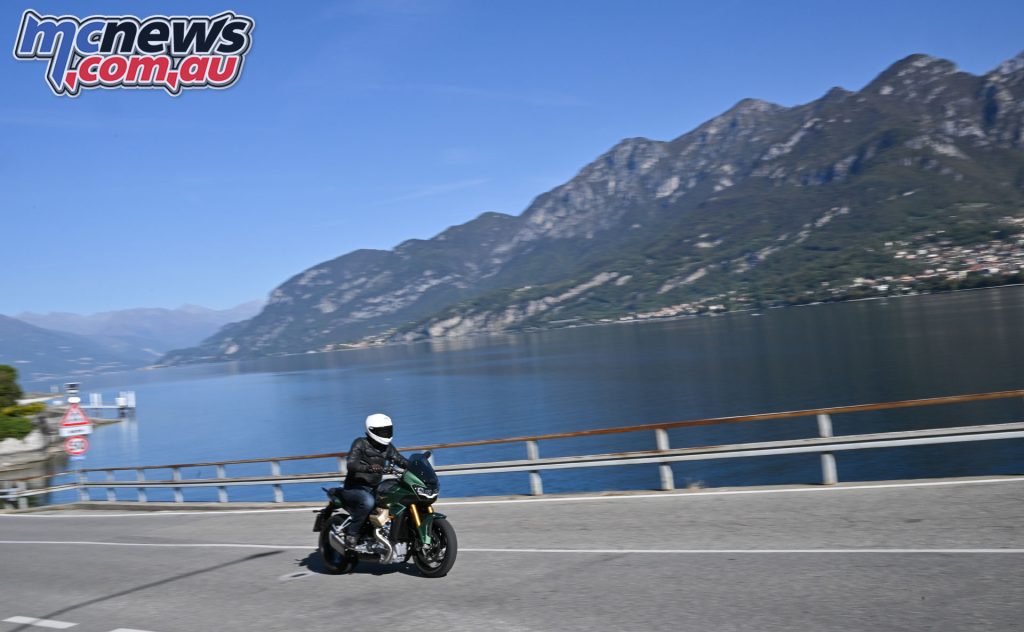
Quintessentially Italian, the day drifts by under the wheels of the new Moto Guzzi V100 Mandello S. It would seem utterly rude to be piloting anything other than a Moto Guzzi, the marque that has made more of an economic contribution to the area than nearly any other company.
The green and silver Mandello S is significant for three reasons. The first is it celebrates 100 years of the Moto Guzzi motorcycle company. A century of beautiful if quirky motorcycles, from the iconic 1955 500 cc V8 grand prix racer to the ugly as sin 1974 Moto Guzzi Eldorado Police, the Le Mans and the bike I’d kill for, the MGS-01.
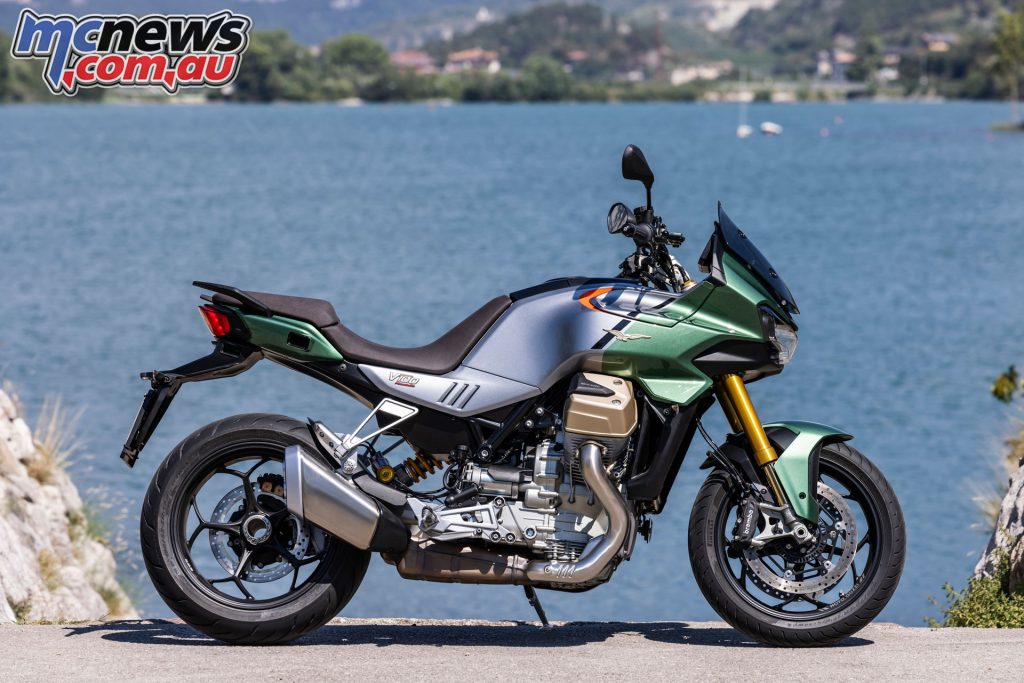
The second significant reason is the Mandello S is the first Moto Guzzi – yep, the very first – to be fitted with a water-cooled engine. Dubbed the “shortblock” with its cylinder heads rotated 90° so now the intake manifold sits in the center of the V rather than near the rider’s knees, the new engine is 103 mm shorter front to back than in old air-cooled form.
And the third significant reason for the 2023 Moto Guzzi V100 Mandello S is the introduction of the company’s first adaptive aero, with flaps sitting below the handlebar that open and close depending on your speed and the riding mode you’re in.
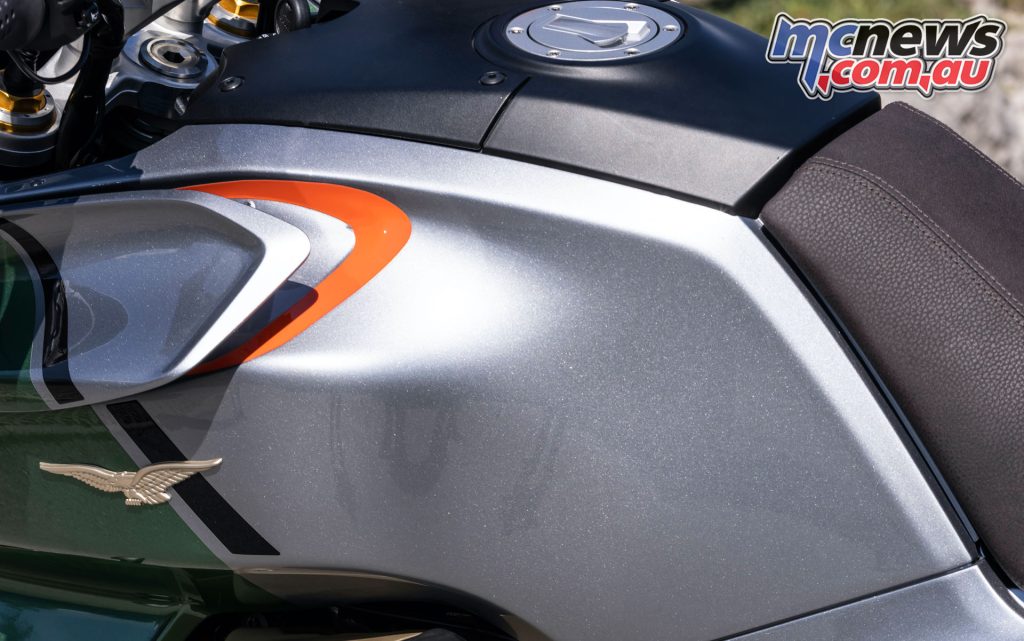
Moto Guzzi make quite the song and dance about that last point but the flaps/winglets, whatever you want to call them, claiming over 200 hours of wind tunnel use was spent on their development. However, I feel they don’t make that much of a difference at speed.
The flaps only open in Tour mode at 70 km/h and always remain open when you ride in Rain mode. In Street and Sport mode, they remain closed in standard form although you can go into the modes individually and allow them to open at a predetermined speed.
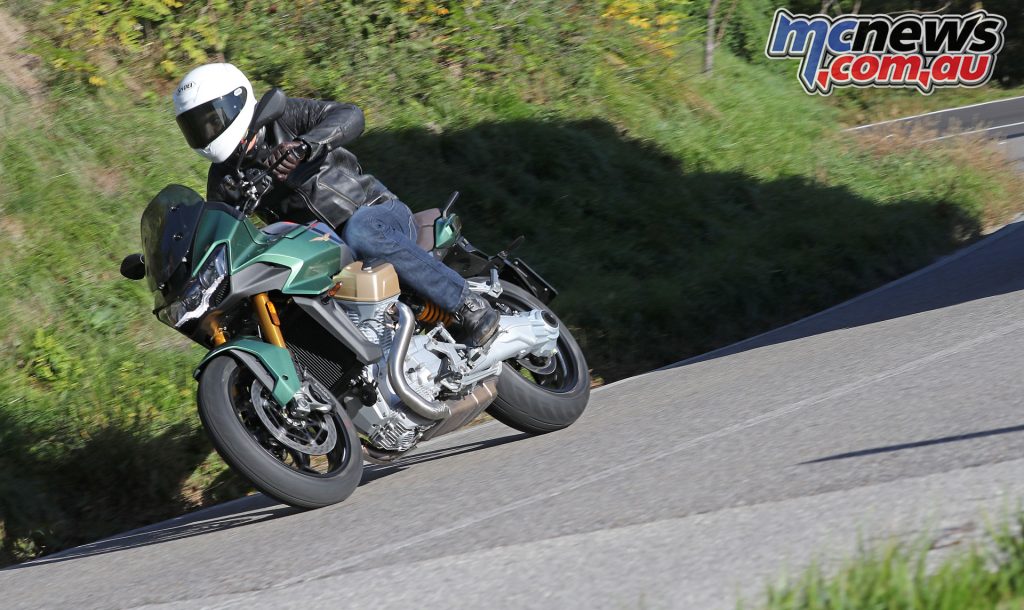
The adaptive aero flaps are claimed to reduce air pressure on the rider by up to 22 percent and work in conjunction with the electronically adjustable windscreen.
I must admit, however, that our test route in Northern Italy wasn’t exactly like pinning the throttle on the Hume Highway – so consistent high speed riding – and thus the flaps relative performance wasn’t that easy to discern. A longer test ride than what our two hour lake jaunt permitted will be required in the future.
However, we got plenty of experience on that fancy water-cooled motor and the all-new chassis, and the ride in this respect is quite unlike any Guzzi I’ve ridden before.
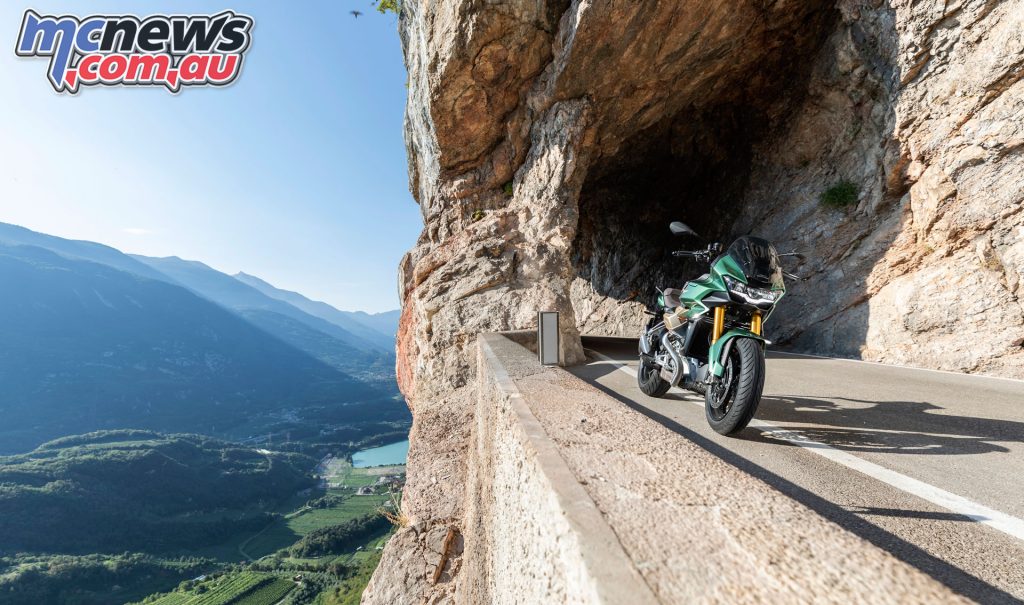
The new transverse V-twin motor produces a claimed 115 hp at 8700 rpm and 77 lb-ft of torque at 6750 rpm, so the V100 Mandello isn’t going to pull any arms out of sockets from sheer acceleration, but you get 82 percent of that 105 Nm of torque from a lowly 3500 rpm.
This number alone gives you a bit of a hint as to the Mandello S’s M.O. This is absolutely not Moto Guzzi’s answer to a BMW S 1000 XR. A sport-touring machine it may be, but the Guzzi’s leanings are much more on the touring side of the equation. Keep the motor in its happy spot between 3-5000 rpm and you’ll have a delightful time on the Mandello.
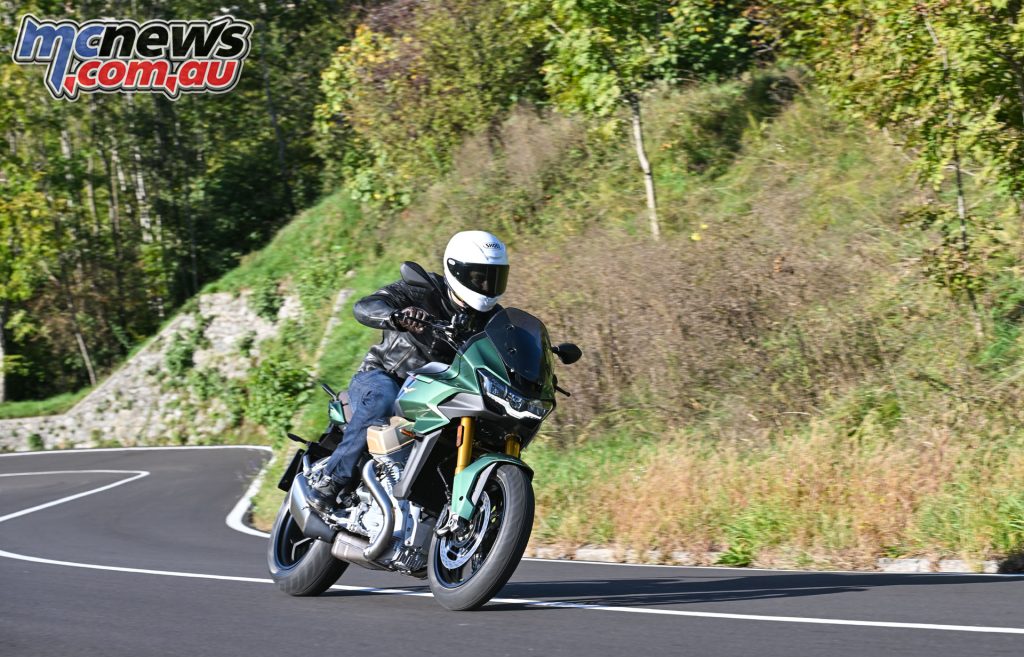
The S version – one of three in the Mandello line-up – gets a quick-shifter but it’s not the smoothest out there. The motor and gearbox may be all new but it still retains that ‘Guzzi-ness’ where if you rev it out in the lower gears and grab a cog, you’ll be met with a decent thump as the gearbox protests your petulant levering of its shifter. Slow down, be more deliberate with your gear-shifts and things will smooth out nicely.
Moto Guzzi has taken some lessons from its sister company Aprilia’s MotoGP program and fitted a counter-rotating crankshaft (although the Mandello S won’t exactly have the same issue with wheelies as Aleix’s RS-GP), and there’s nowhere near the same side-to-side rock you get in the chassis when you blip the throttle—a Moto Guzzi transverse V-twin trademark if ever there was one.
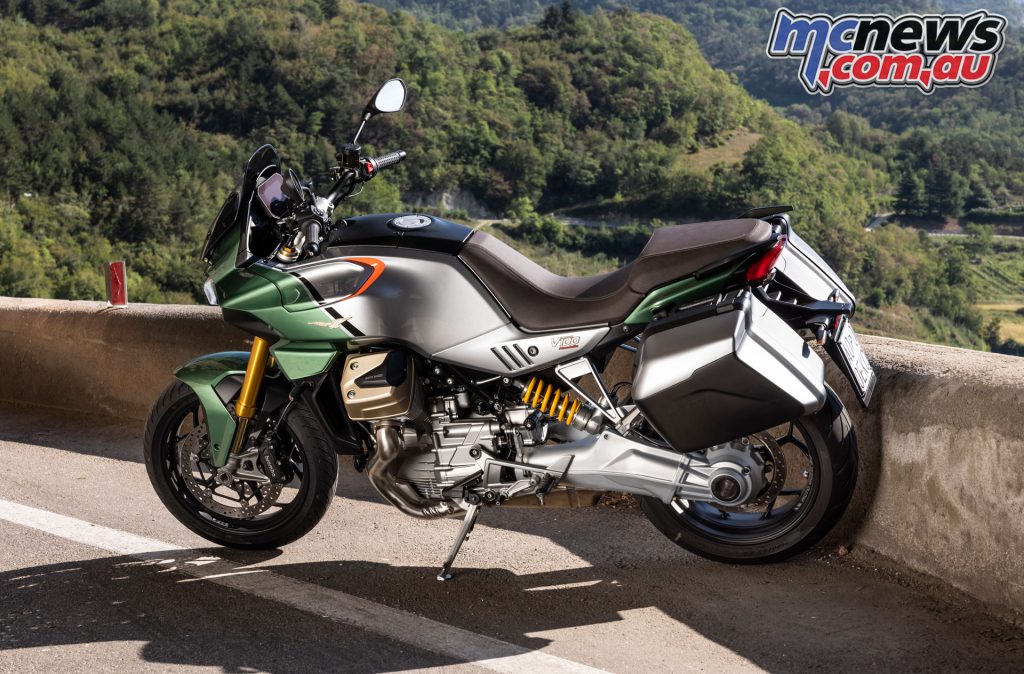
The engine is remarkably smooth for the most part and it’s mated to a new six-axis Marelli 11MP IMU, with four modes of Turismo (Tour), Pioggia (Rain), Strada (Street), and Sport, traction and engine maps dialed to suit each mode from the factory—but you can go into the modes and mess around with the various parameters if you like.
Ergonomically, the Mandello S is miles apart from anything Moto Guzzi has created before. The motor has been tilted 5° forward in the chassis, putting more weight over the front-end and the fact the intake now sits in the middle of the engine’s V means the rider has been given the kind of leg room BMW flat-twin riders have enjoyed for ages.
The seat height at standard is 812 mm, but my personal oversize chassis preferred the 20 mm taller accessory seat which alleviated some of the cramp in my knees over an hour’s ride. Comfort has been enhanced by the electronically-adjustable screen and a near perfect handlebar position for long days in the saddle. Once you figure out which seat height you want, the Guzzi is supremely comfy, which makes you wonder how so many companies in this space can make a bike like this but screw up the ergonomics so bad.
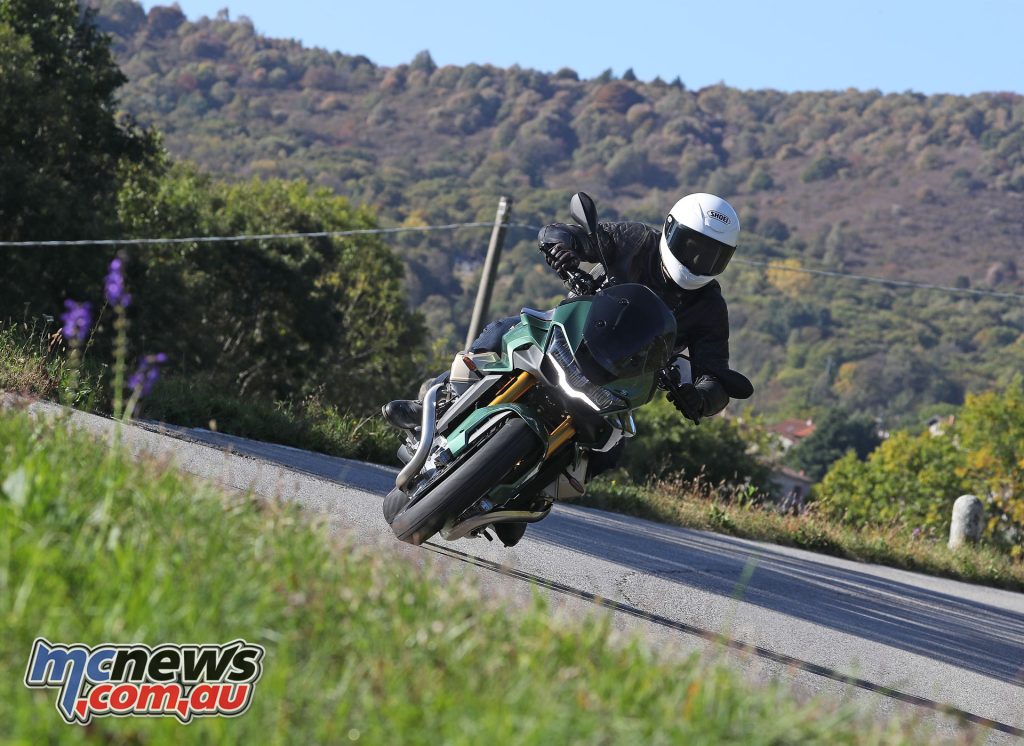
The Mandello S is graced with Ohlins Smart EC 2.0 suspension, a system we’ve seen many times on a lots of different machines, not just from Aprilia/Moto Guzzi/Piaggio. Running 43 mm gold-legged forks and shock, the system allows for fully automatic damping front and rear or you can get in there, switch it to manual, and adjust the electronic “clickers” yourself—there’s also an handy pre-load knob on the left side in case you have a passenger and or luggage.
Inside the suspension’s ECU sits two auto modes – Dynamic and Comfort – then there’s two manual modes of Manual 1 and Manual 2.
I’ll be honest and admit to not messing with the manual modes as Dynamic auto mode was more than fine for me (I also left it in the Strada ECU mode after about half an hour on board, which had a much nicer throttle response than the Sport mode).
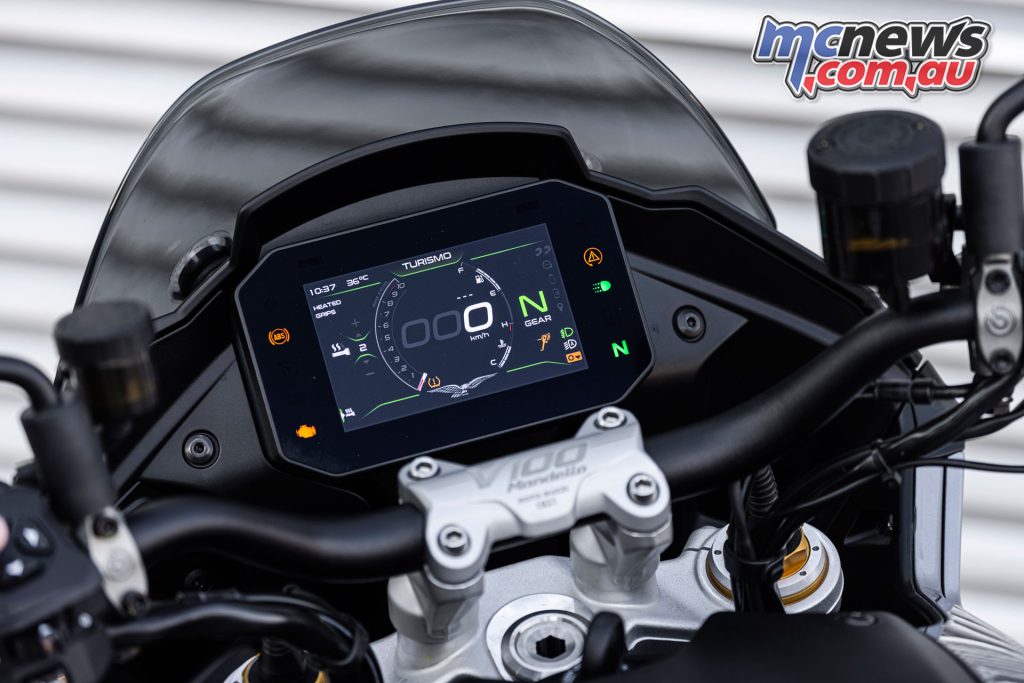
Interestingly and thankfully, Moto Guzzi hasn’t gone soft on the brakes and fitted Brembo M4.32 radial four-piston calipers, which isn’t a massive deal as many other bikes have them, but Moto Guzzi has fitted a Brembo radial 18 mm master-cylinder on which to modulate the power. The result is a lovely, smooth feeling at the lever, even if the ABS kicks in a little earlier than I would have liked.
The combination of the roomy chassis, those gold Ohlins and the excellent braking package and the all-new short-block moto, made for a real surprise ride. The Mandello S encourages you to ride at a spirited pace, but not like you’re going to break your local lap record. There’s just something about a Guzzi that does things to a rider almost no other marque can.
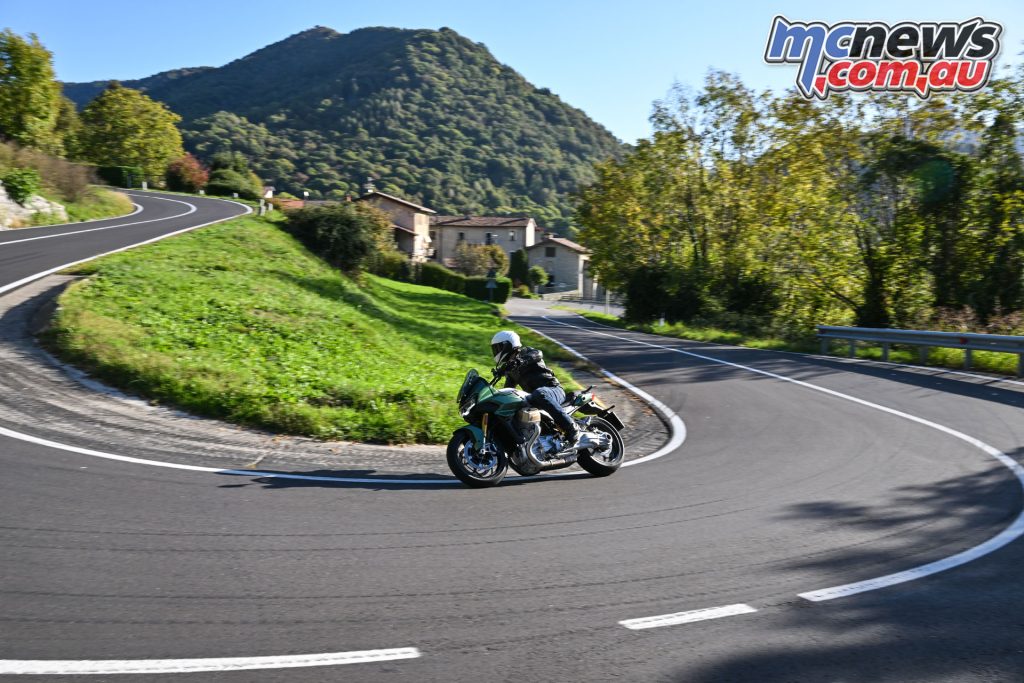
The oddness of the transverse V-twin is a sensation you need to experience, although I would encourage getting on an older, air-cooled Guzzi and then hopping on the Mandello S to see just how far they’ve come. Moto Guzzi and the transverse V-twin go together like Harley-Davidson and push-rods, if any other company bought out this style of engine, they’d be merely copying.
The Mandello S is the third in the Mandello line-up. The base model runs 41 mm Kayaba forks and shock, and the paint is a rather fetching semi-gloss white or deep red. Everything else is the same, from the adjustable screen and aero to the IMU, traction and engine brake control, cruise control, cornering ABS, etc.
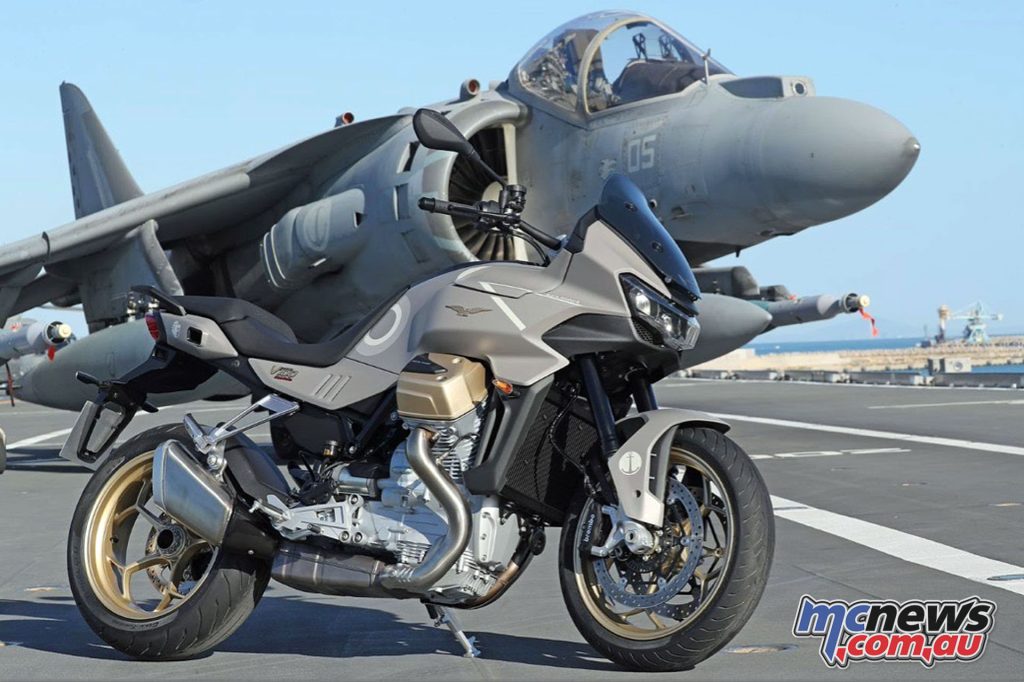
The second model is the V100 Aviazione Navale, which commemorates Moto Guzzi’s link with the Italian navy. It runs a gorgeous flat grey paint in the same style as the navy’s F35B fighter jet – and is my pick of the three colors.
There’ll be 1913 examples of the Aviazione Navale created, with each unit number stamped onto the handlebar clamp. You’ll also get heated hand grips, tyre pressure monitoring, a bike cover and a dedicated aluminium plaque.
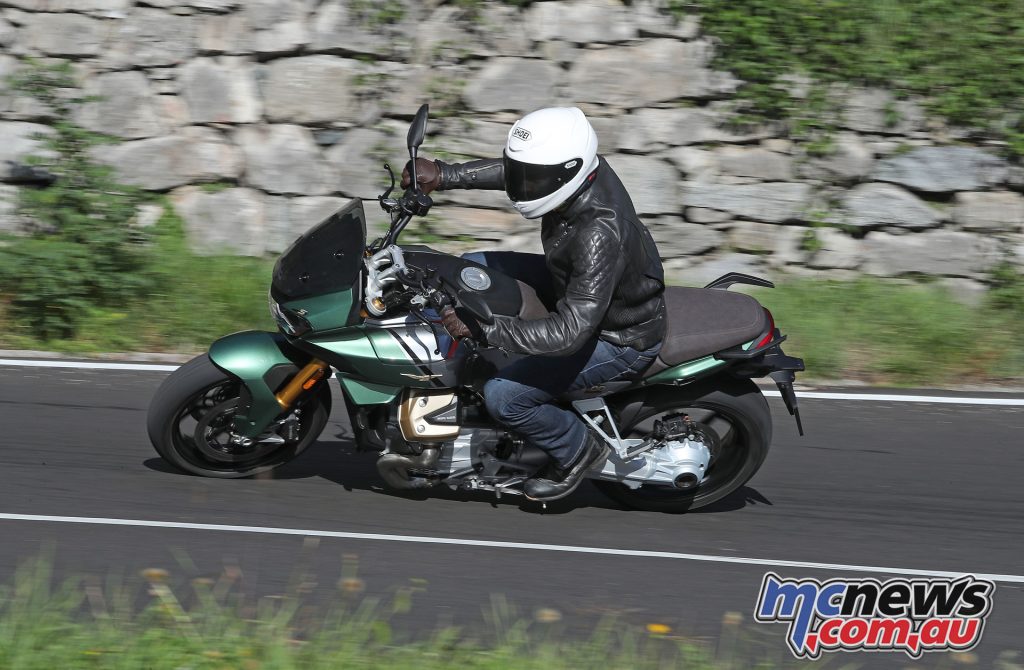
I’ve only ridden the Mandello S so can’t comment on the performance of the 41 mm forks on the base and Aviazione Navale models. However, the Mandello S is a thoroughly enjoyable machine and one that is long overdue (i.e water-cooling) for Moto Guzzi.
Charmingly, these bikes are still created in the original Moto Guzzi factory a block from the Mandello del Lario water’s edge, the same place that’s churned out 100 years of the flying eagle bikes.
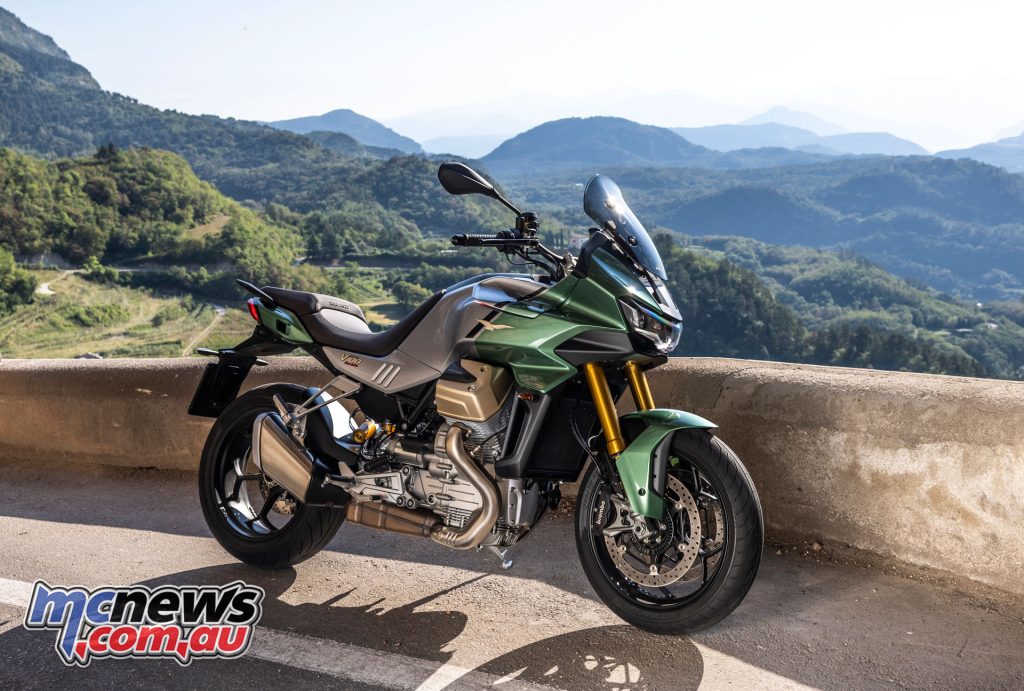
Here’s to another 100 years.
Australian Moto Guzzi V100 Mandello S Pricing
The Moto Guzzi V100 Mandello, will be available in the Bianco Polare and Rosso Magma colour schemes for $28,290 ride-away in late-May 2023 in Australia.
The up-spec Moto Guzzi V100 Mandello S will be available in the Verde 2121 colour version or in Grigio Avanguardia, for $32,290 ride-away in late-May 2023 in Australia.
2023 Moto Guzzi V100 Mandello S Specifications
| 2023 Moto Guzzi V100 Mandello [S] Specifications | |
| Type | Liquid-cooled 90° transverse V-twin. Double overhead camshaft timing with finger followers and four valves per cylinder |
| Capacity | 1042 cc |
| Bore x stroke | 96 x 72 mm |
| Compression ratio | 12.6 : 1 |
| Max Power | 115 hp (84.6 kW) at 8700 rpm |
| Max Torque | 105 Nm (10.7 kgm) at 6750 rpm |
| Fuel system | Electronic injection; 52 mm double throttle body, Ride-by-Wire |
| Fuel capacity | 17 litres (including 3.5 litre reserve) |
| Emissions compliance | Euro 5 |
| Consumption (WMTC cycle) | 4.7 l/100 km |
| CO2 Emissions (WMTC cycle) | 118 g/km |
| A/C generator | 550 W |
| System voltage | 12 V |
| Battery | 12V – 12 Ah |
| Clutch | Hydraulic multi-plate wet clutch with anti-juddering system |
| Transmission | Six speed, Six speed with electronic quick shift system |
| Primary drive | Straight cut gears and integrated flexible coupling, gear ratio: 31/48 (1.548) |
| Secondary drive | Cardan shaft: Drive ratio: 12/38 (3.166) |
| Electronics | Three engine mappings (MGCM), Two level engine brake control (MGFM), four level traction control (MGTC), cruise control. Four Riding Modes (Tour, Rain, Road, Sport), Quick shift |
| Chassis | High strength steel tubular frame |
| Front suspension | Öhlins Smart EC 2.0 semi-active fork, 43 mm USD with superficial TIN treatment, fully adjustable |
| Front travel | 130 mm |
| Rear suspension | Öhlins Smart EC 2.0 semi-active single shock that is fully adjustable and complete with spring preload adjustment via a knob |
| Rear travel | 130 mm |
| Brakes Front | 320 mm double floating disc in stainless steel, Brembo radial callipers with four opposed pistons and a metal trellis tube, Continental ABS with cornering function |
| Brakes Rear | 280 mm stainless steel disc, Brembo two-piston floating calliper, Continental ABS with cornering function |
| Wheels | Aluminium alloy |
| Wheels | 3.50 x 17in, 6.00 x 17in |
| Tyre | Radial tubeless, 120/70 – R17, 190/55 – R17 |
| Length | 2125 mm |
| Width | 835 mm |
| Wheelbase | 1475 mm |
| Seat height | 815 mm (accessories: low seat 800 mm; high seat 835 mm) |
| Headstock angle | 24.7° |
| Trail | 104 mm |
| Dry weight | 212 kg |
| Kerb weight* | 233 Kg |























